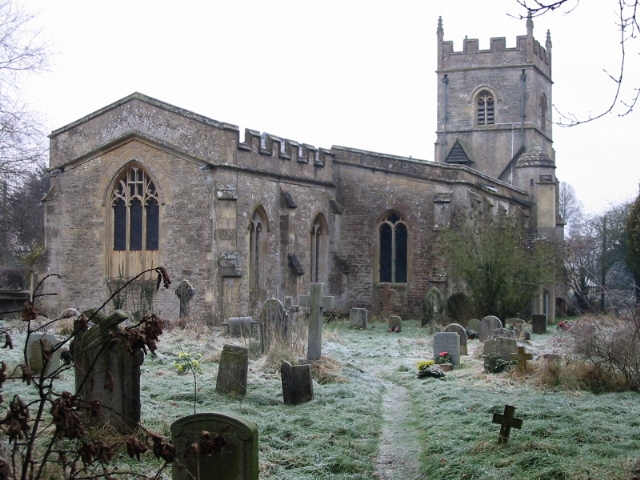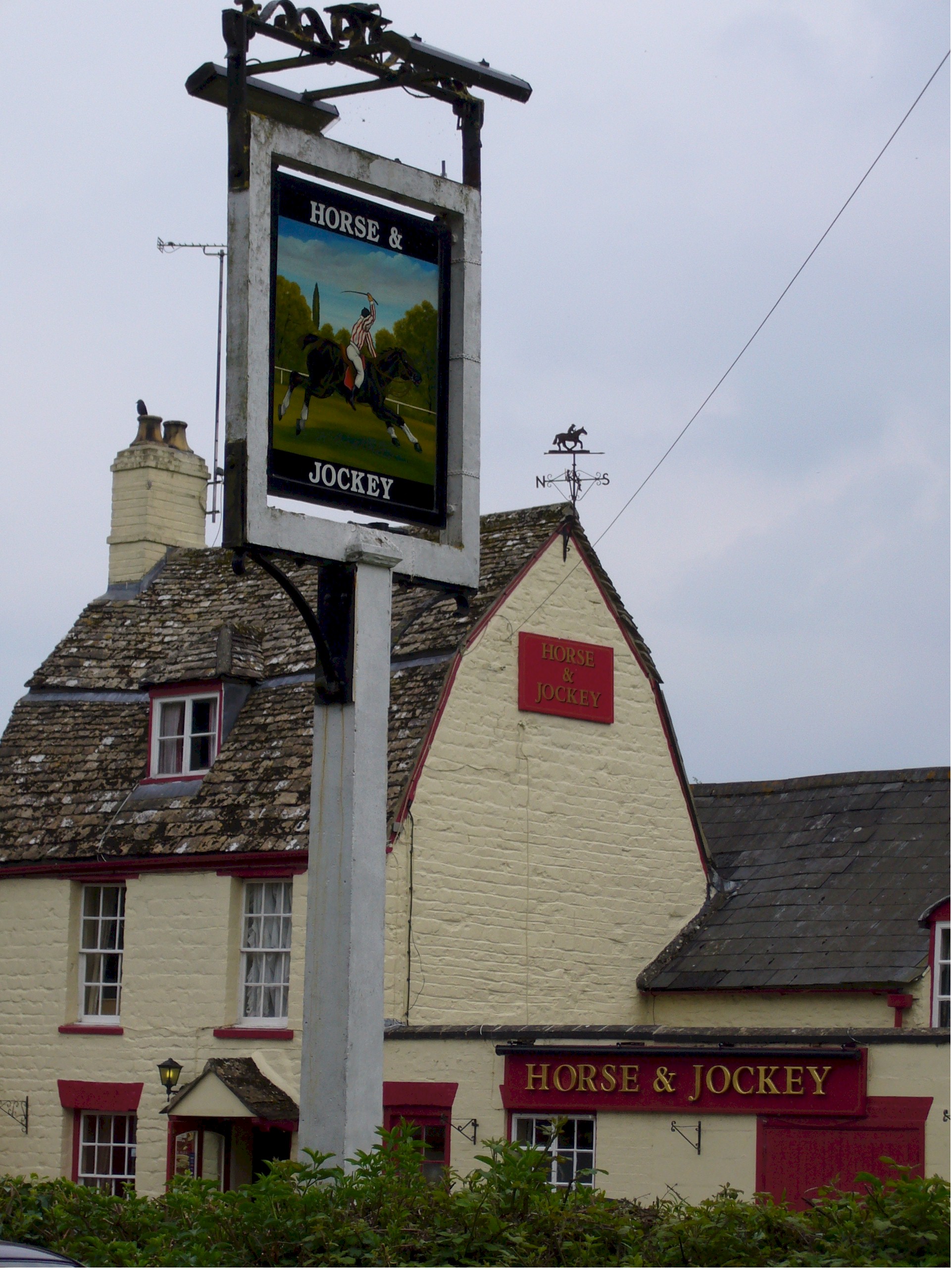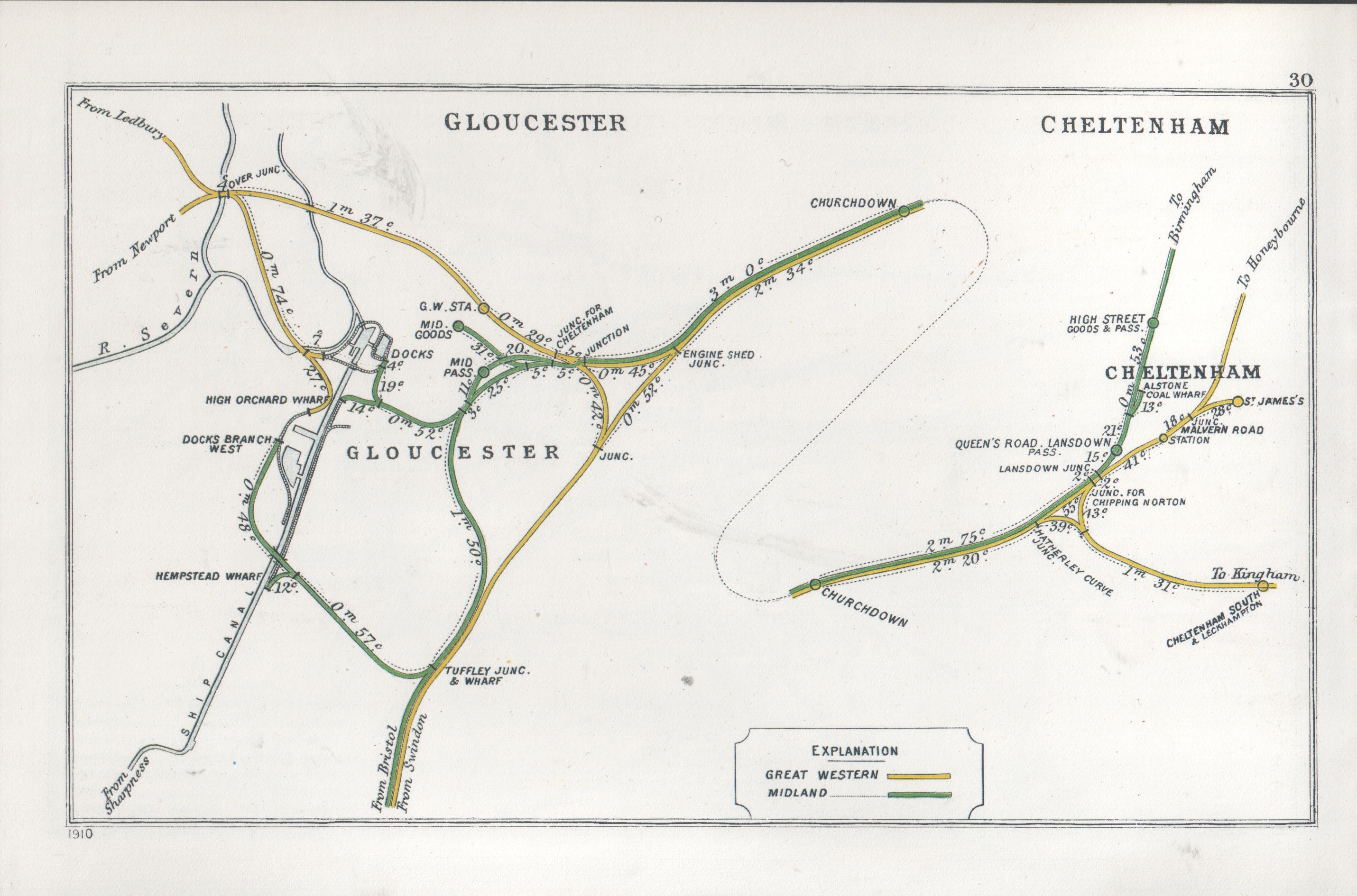|
Cerney And Ashton Keynes Railway Station
South Cerney railway station was on the Midland and South Western Junction Railway in Gloucestershire. The station opened on 18 December 1883 on the Swindon and Cheltenham Extension Railway line from Swindon Town to the temporary terminus at Cirencester Watermoor. The S&CER line amalgamated in 1884 with the Swindon, Marlborough and Andover Railway to form the M&SWJR, and through services beyond Cirencester to the junction at Andoversford with the Great Western Railway's Cheltenham Lansdown to Banbury line, which had opened in 1881, started in 1891. Cerney and Ashton Keynes station was just outside the village of South Cerney and about 2.5 miles north east of Ashton Keynes. In 1905, the Great Western Railway's Minety station on the Swindon to Kemble line was renamed as "Minety and Ashton Keynes": it was about the same distance south west of Ashton Keynes. The two stations were not in nominal competition for long, however. Cerney and Ashton Keynes was renamed as simply "Cerney" ... [...More Info...] [...Related Items...] OR: [Wikipedia] [Google] [Baidu] |
South Cerney
South Cerney is a village and civil parish in the Cotswold district of Gloucestershire, 3 miles south of Cirencester and close to the border with Wiltshire. It had a population of 3,074 according to the 2001 census, increasing to 3,464 at the 2011 census. It was founded in 999 by Saxon settlers, with a charter by King Aethelred II. In 2001 South Cerney was winner of the Bledisloe Cup for the best-kept village in Gloucestershire (large village class), having previously won the award in 1955. Church of All Hallows, South Cerney and Ann Edwards School Two fragments of a carved wooden crucified Christ, a head and a foot, were found in 1915 concealed in a wall of the village church. The crucifix was probably hidden at the time of the Reformation but mostly disintegrated due to the damp. Part of a crucifix that dates from the 12th century, it is one of very few early-medieval wooden sculptures of Christ extant in England, and would have been part of the 'rood' that stood above ... [...More Info...] [...Related Items...] OR: [Wikipedia] [Google] [Baidu] |
Banbury Railway Station
Banbury railway station serves the town of Banbury in Oxfordshire, England. The station is operated by Chiltern Railways, on the Chiltern Main Line, and has four platforms in use. History Banbury Bridge Street station opened on 2 September 1850, some four months after the Buckinghamshire Railway (L&NWR) opened its terminus. When meadows and the recently disused racecourse at Grimsbury were sold to the Great Western Railway (GWR) in about 1850, the owner also sold the other part of his land, north of the Middleton road to the Banbury Freehold Land Society, which was financially backed by Cobb's Bank, on which to build middle-class houses, but development was slow at the time and some plots were never built upon. The station was going to be part of the GWR's Oxford and Rugby Railway, before the problems with changing gauges at prevented it. The single track extension from Oxford to Banbury did open, and at first Banbury was just a single platform through station (works were c ... [...More Info...] [...Related Items...] OR: [Wikipedia] [Google] [Baidu] |
Former Midland And South Western Junction Railway Stations
A former is an object, such as a template, gauge or cutting die, which is used to form something such as a boat's hull. Typically, a former gives shape to a structure that may have complex curvature. A former may become an integral part of the finished structure, as in an aircraft fuselage, or it may be removable, being using in the construction process and then discarded or re-used. Aircraft formers Formers are used in the construction of aircraft fuselage, of which a typical fuselage has a series from the nose to the empennage, typically perpendicular to the longitudinal axis of the aircraft. The primary purpose of formers is to establish the shape of the fuselage and reduce the column length of stringers to prevent instability. Formers are typically attached to longerons, which support the skin of the aircraft. The "former-and-longeron" technique (also called stations and stringers) was adopted from boat construction, and was typical of light aircraft built until the ad ... [...More Info...] [...Related Items...] OR: [Wikipedia] [Google] [Baidu] |
Second World War
World War II or the Second World War, often abbreviated as WWII or WW2, was a world war that lasted from 1939 to 1945. It involved the vast majority of the world's countries—including all of the great powers—forming two opposing military alliances: the Allies and the Axis powers. World War II was a total war that directly involved more than 100 million personnel from more than 30 countries. The major participants in the war threw their entire economic, industrial, and scientific capabilities behind the war effort, blurring the distinction between civilian and military resources. Aircraft played a major role in the conflict, enabling the strategic bombing of population centres and deploying the only two nuclear weapons ever used in war. World War II was by far the deadliest conflict in human history; it resulted in 70 to 85 million fatalities, mostly among civilians. Tens of millions died due to genocides (including the Holocaust), starvation, ma ... [...More Info...] [...Related Items...] OR: [Wikipedia] [Google] [Baidu] |
Railways Act 1921
The Railways Act 1921 (c. 55), also known as the Grouping Act, was an Act of Parliament enacted by the British government and intended to stem the losses being made by many of the country's 120 railway companies, by "grouping" them into four large companies dubbed the " Big Four". This was intended to move the railways away from internal competition, and retain some of the benefits which the country had derived from a government-controlled railway during and after the Great War of 1914–1918. The provisions of the Act took effect from the start of 1923. History The British railway system had been built up by more than a hundred railway companies, large and small, and often, particularly locally, in competition with each other. The parallel railways of the East Midlands and the rivalry between the South Eastern Railway and the London, Brighton and South Coast Railway at Hastings were two examples of such local competition. During the First World War the railways were under st ... [...More Info...] [...Related Items...] OR: [Wikipedia] [Google] [Baidu] |
Minety, Wiltshire
Minety is a village in north Wiltshire, England, between Malmesbury – to the west – and Swindon. It takes its name from the water mint plant found growing in ditches around the village, and has previously been known as Myntey. It has a primary school and a successful rugby club. Geography The village is divided into Upper Minety, with St Leonard's church, and Lower Minety (or simply Minety) which grew after the railway arrived. The civil parish includes the hamlets of Brandier, Lower Moor and the former hamlet of Sawyers Hill, now part of Minety village. Swill Brook forms part of the northern boundary of the parish and joins the infant River Thames a short distance outside the parish, near Ashton Keynes. Acres Farm Meadow is a biological Site of Special Scientific Interest. The Minety Battery Energy Storage Project, about west of the village, was the largest grid-connected battery in Europe when it began operation in 2021. History Fragments of an Anglo-Saxon carved sto ... [...More Info...] [...Related Items...] OR: [Wikipedia] [Google] [Baidu] |
Kemble Railway Station
Kemble railway station is a railway station that serves the village of Kemble in Gloucestershire, England. The station is on the to "Golden Valley" line. Despite its rural location, Kemble station has a high number of passengers, due mainly to the proximity of Cirencester. History The station was opened by the Great Western Railway (GWR) as an exchange station on 12 May 1845 with the line opening from Swindon to Gloucester. Only on 1 May 1882 did it become a public station replacing the nearby . The distance between the platforms and the large clearance between the remaining running lines is a legacy from when Kemble first opened because it originally accommodated Brunel's broad gauge tracks. These were changed to standard gauge tracks in 1892. Until the 1960s the station was a junction, with services to the nearby market towns of (to the northeast) and (southwest). Both the Tetbury branch line and the Cirencester Branch Line were closed to traffic under '' The Reshapi ... [...More Info...] [...Related Items...] OR: [Wikipedia] [Google] [Baidu] |
Swindon Railway Station
Swindon railway station is on the Great Western Main Line in South West England, serving the town of Swindon, Wiltshire. It is down the line from the zero point at and is situated between and on the main line. It is managed by Great Western Railway, which also operates all the trains. Being roughly halfway between the English and Welsh capitals of London and Cardiff, it is an important junction, where the former Great Western Railway line to and , the main line to , and the South Wales Main Line via diverge. It is approximately from the central bus station and the town centre. It is served by GWR services from Paddington to Bristol Temple Meads, Cheltenham Spa via Gloucester, , and the rest of South Wales, and to . History The main line of the Great Western Railway (GWR) was built and opened in stages. Construction began in late 1835, and by the end of August 1840 the line was open between and (later known as Challow), also between Bristol and Bath. The se ... [...More Info...] [...Related Items...] OR: [Wikipedia] [Google] [Baidu] |
Minety And Ashton Keynes Railway Station
Minety and Ashton Keynes railway station serving the village of Minety in Wiltshire, England, was opened in 1841 on the former Cheltenham and Great Western Union Railway line from Gloucester to Swindon; it was originally called just Minety. The Cheltenham and Great Western Union connected to the South Wales Railway in and to the Great Western Railway at . The Cheltenham and Great Western Union and the South Wales lines were both later absorbed by the Great Western Railway, which provided the train services on the line. In 1905 the station was renamed Minety & Ashton Keynes. In 1948 the Great Western Railway was nationalised and the station thereafter was owned by British Rail. Although the line remains open the station closed in November 1964 and has been demolished, except for parts of the platforms. Trains run along what is now called the Golden Valley Line from London Paddington via , Didcot Parkway and Swindon, then past the three closed stations of , Minety and to ... [...More Info...] [...Related Items...] OR: [Wikipedia] [Google] [Baidu] |
Ashton Keynes
Ashton Keynes is a village and civil parish in north Wiltshire, England which borders with Gloucestershire. The village is about south of Cirencester and west of Cricklade. At the 2011 census the population of the parish, which includes the hamlet of North End, was 1,400. The village lies within the Cotswold Water Park and is the only settlement substantially on both sides of the River Thames, which has many channels here, centred from its source at Thames Head. History A Romano-British settlement and field system was west of the present-day village, spanning the county boundary; it was investigated in 1971 before it was destroyed by gravel extraction. 'Ashton' comes from the Old English ''Æsctūn'', meaning 'place or settlement where ash trees grew'. In 1086, land at ''Essitone'' held by Cranborne Priory (Dorset) was recorded in the Domesday Book within Cricklade hundred. The land was transferred to the recently founded Tewkesbury Abbey (Gloucestershire) in 1102. Ashton ... [...More Info...] [...Related Items...] OR: [Wikipedia] [Google] [Baidu] |
Cheltenham Spa Railway Station
Cheltenham Spa railway station is a railway station serving Cheltenham in Gloucestershire, England. Situated on the Bristol-Birmingham main line, it is managed by Great Western Railway (despite most services being operated by CrossCountry, which does not manage any stations) and is about one mile from the town centre. The official name of the town is simply ''Cheltenham'', but, when the station was renamed in 1925, the London, Midland and Scottish Railway chose to add ''Spa'' to the station name. The station is a key regional interchange and is the fifth busiest rail station in South West England. History The first railway to Cheltenham was the broad-gauge Cheltenham and Great Western Union Railway (C&GWUR), authorised by Act of Parliament in 1836, and opened between Cheltenham and Gloucester in 1840. In the same year, the Birmingham and Gloucester Railway (B&GR) opened its line between Cheltenham and Bromsgrove, whence trains ran on mixed-gauge tracks to Gloucester. Both ... [...More Info...] [...Related Items...] OR: [Wikipedia] [Google] [Baidu] |





